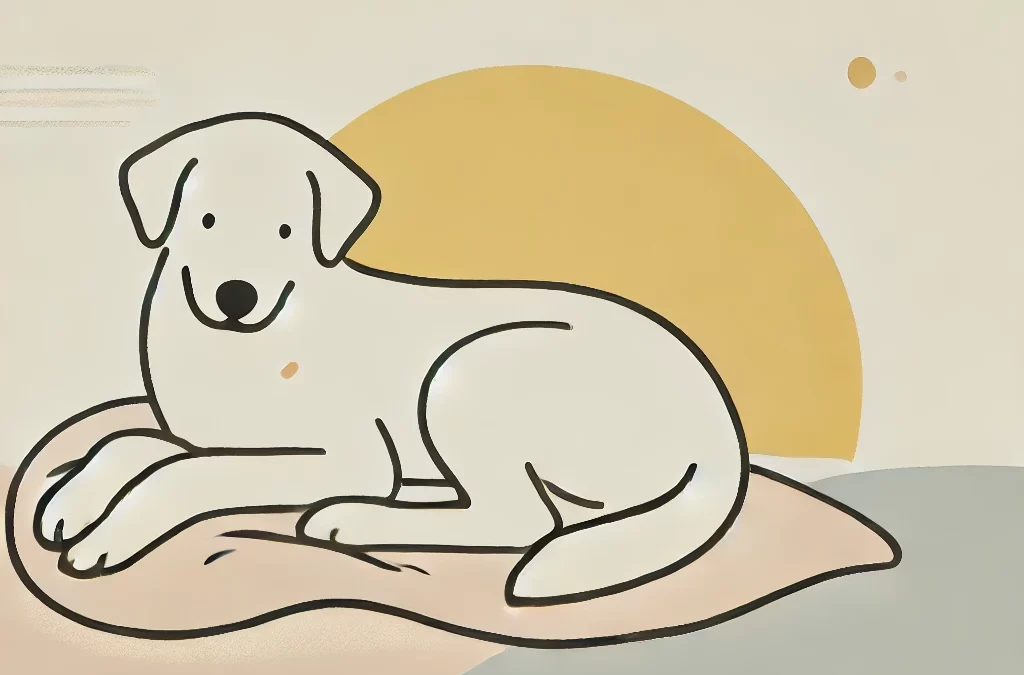
經過 TCMVET | 2024 年 12 月 30 日 | 食品與健康
隨著全球對寵物健康意識的不斷增強,寵物主人越來越多地尋求自然和整體的方法來管理寵物的狀況,特別是在涉及癌症等複雜疾病時。雖然手術、化療和放療等傳統獸醫治療仍然必不可少,但越來越多的寵物主人開始轉向飲食調整和天然補充劑來補充這些療法。這種綜合方法不僅針對腫瘤管理,還透過增強免疫力、減少發炎和增強活力來幫助改善整體健康。
在本文中,我們探討了飲食調整和天然補充劑如何在寵物腫瘤的治療中發揮重要作用,特別關注新興產品 中醫獸醫白兔消.
飲食在腫瘤治療中的作用
飲食是維持寵物健康的基礎,並且在腫瘤的預防和管理中發揮著至關重要的作用。腫瘤在酸性環境中繁殖,而標準的商業寵物食品通常富含加工穀物和糖,可能會導致發炎和不健康的免疫反應。均衡的飲食有助於創造不利於腫瘤生長的鹼性環境。
腫瘤護理的關鍵飲食調整:
- 低碳水化合物、高蛋白質飲食:癌細胞偏好葡萄糖(糖)作為主要能量來源。減少碳水化合物並關注優質蛋白質來源可以幫助剝奪癌細胞這種能量來源。
- 加入 Omega-3 脂肪酸:魚油或亞麻籽中發現的 Omega-3 脂肪酸以其抗炎特性而聞名,並在減少腫瘤生長和支持整體健康方面顯示出前景。
- 富含抗氧化劑的食物:將莓果、菠菜和薑黃等富含抗氧化劑的食物納入寵物飲食中,有助於對抗氧化壓力並促進健康的細胞功能。
- 抗發炎食品:慢性發炎與癌症進展有關。生薑、薑黃和綠茶萃取物等成分以其抗發炎功效而聞名。
天然補充劑在腫瘤治療中的作用
雖然飲食調整起著關鍵作用,但天然補充劑可以為管理寵物腫瘤提供額外支持。補充劑可以提供有針對性的方法來解決癌症管理的各個方面,包括免疫支持、發炎控制和細胞修復。
其中一種已引起獸醫界關注的補充劑是 中醫獸醫白兔消。這種補充劑融合了傳統中藥 (TCM) 和現代科學進步,在癌症治療過程中顯示出促進腫瘤縮小和支持寵物免疫系統的前景。
介紹 中醫獸醫白兔消:寵物腫瘤管理的遊戲規則改變者
中醫獸醫白兔消 是一種專為患有腫瘤的寵物設計的純天然補充劑。本產品利用傳統中醫 (TCM) 原理,將古代治療智慧的精華與現代獸醫科學結合。它的作用是增強人體的自然防禦機制、減少發炎和支持細胞修復,從而創造一個腫瘤細胞難以生長的環境。
主要成分 中醫獸醫白兔消:
- 黃耆:黃耆以其增強免疫力的特性而聞名,有助於調節免疫系統並支持整體活力。
- 靈芝:靈芝在中醫中使用了幾個世紀,具有有效的抗癌特性,有助於促進肝臟和腎臟的健康。
- 薑黃(薑黃素):薑黃中的活性化合物薑黃素是一種強大的抗發炎和抗氧化劑,有助於減少腫瘤生長。
- 參:人參以其提高能量水平、減輕疲勞和刺激免疫系統的能力而聞名。
- 甘草:這種成分有助於增強其他草藥的效果,通常用於平衡身體的能量。
如何 中醫獸醫白兔消 作品
這些成分的獨特組合 中醫獸醫白兔消 協同作用,為寵物對抗腫瘤提供多方面的支持。透過改善免疫功能和減少惡性細胞的生長,該補充劑為傳統治療提供了替代或補充選擇。它可以與化療和放療一起使用,以減少副作用並縮短恢復時間。
中醫獸醫白兔消 它還支持肝臟、腎臟和消化系統,這些系統在接受傳統癌症治療的寵物中經常受到損害。寵物主人報告稱,透過持續使用,寵物的整體能量、食慾和生活品質都有所改善。
結合飲食調整 中醫獸醫白兔消
治療寵物腫瘤的整體方法的關鍵是將飲食調整與天然補充劑(如 中醫獸醫白兔消。它們共同創造了一個支持性環境,不僅有助於控制腫瘤,還可以增強寵物的免疫系統、減少發炎並改善整體健康。
以下是一些關於如何合併的提示 中醫獸醫白兔消 進入你的寵物的日常生活:
- Consult Your Veterinarian:在開始任何新的補充劑之前,必須與您的獸醫討論,特別是如果您的寵物正在接受傳統的癌症治療。
- 一致的劑量:確保按照建議劑量持續服用補充劑,以獲得最佳效果。
- 搭配均衡飲食:將補充劑與富含 omega-3、抗氧化劑和蛋白質的飲食搭配會增強其效果。
- 監控您寵物的進展:追蹤寵物的能量水平、食慾和整體健康狀況,以評估補充劑的影響。
結論
自然療法,包括飲食調整和補充劑,例如 中醫獸醫白兔消,正在徹底改變我們處理寵物腫瘤的方式。透過解決腫瘤生長的根本原因並支持整體健康,這些整體方法為傳統治療提供了有效的補充方法。永遠記住,平衡、全面的策略是確保您的寵物在與癌症作鬥爭的過程中保持健康的最佳方法。
透過飲食、生活方式和補充劑(如 中醫獸醫白兔消,我們可以為寵物創造一條途徑,不僅可以對抗癌症,而且可以過著更健康、更有活力的生活。

經過 TCMVET | 2024 年 11 月 26 日 | 食品與健康
作為寵物主人,我們不斷尋找改善狗狗健康的方法。雖然魚油或葡萄糖胺等主流補充劑被廣泛使用,但一種越來越受歡迎的獨特選擇是 香菇粉。這種古老的超級食物傳統上在亞洲美食和醫學中備受推崇,現在正以其良好的功效進入寵物健康領域。讓我們深入研究為什麼香菇粉可能會成為您毛茸茸的朋友的下一個遊戲規則改變者。
什麼是香菇粉?
香菇(Lentinula edodes)是一種食用菌,以其濃鬱的鮮味和強大的保健功效而聞名。當磨成細粉時,這種成分就成為一種多功能補充劑,可以輕鬆添加到您的狗的膳食中。香菇富含維生素 B 和 D、硒、銅和多醣等必需營養素,它不僅僅是一種美味佳餚。
對狗狗的驚人健康益處
香菇粉不僅是一種時尚的添加物,也是一種流行的添加物。它有科學支持。以下是一些可以改善狗狗健康的方法:
- 免疫系統支持
香菇含有β-葡聚醣,這種化合物以其增強免疫力的特性而聞名。這些有助於增強狗對感染和疾病的防禦能力,對老年狗或免疫系統較弱的狗特別有益。
- 抗發炎特性
如果您的狗患有關節炎、過敏或其他慢性炎症,香菇中的天然化合物可以幫助減輕發炎並促進舒適。
- 抗氧化動力來源
香菇富含硒等抗氧化劑,可以對抗狗的氧化應激,從而延緩衰老並降低慢性疾病的風險。
- 消化系統健康
香菇中的益生元纖維可透過餵食有益細菌、改善消化和幫助營養吸收來支持腸道健康。
- 癌症預防和支持
香菇粉因其潛在的抗癌特性而受到關注,特別是由於香菇多醣等化合物。雖然不是治癒方法,但它可以作為狗對抗腫瘤的補充療法。
如何為你的狗引入香菇粉
- 從小事做起
首先將少量(小型犬約 1/4 茶匙,大型犬約 1/2 茶匙)混入食物中。隨著你的狗的適應逐漸增加。
- 選擇優質粉末
確保您使用的是專為寵物配製的產品。有機、無農藥且經過最低限度加工的粉末是最好的。
- 觀察和調整
監測您的狗消化或行為的任何變化。雖然很少見,但有些狗可能對蘑菇敏感。
道德紅利:永續性
使用香菇粉符合環保做法。蘑菇種植需要最少的水和土地,使其成為永續的選擇。隨著越來越多的寵物主人擁抱環保的生活方式,在您的狗的飲食中添加香菇粉可能是邁向綠色未來的一小步。
打破迷思:蘑菇對狗狗安全嗎?
由於擔心有毒,許多寵物主人在聽到「蘑菇」時會猶豫不決。雖然某些野生蘑菇確實很危險,但適量食用香菇等栽培品種對狗來說是完全安全的。與往常一樣,在引入任何新的補充劑之前,請諮詢您的獸醫。
狗狗香菇粉食譜
為了讓用餐時間變得有趣,以下是一些將香菇粉添加到狗狗飲食中的簡單方法:
- 香菇灑:在狗狗日常粗磨食物或濕糧上撒少許粉末。
- 金色膏體:將香菇粉與薑黃、椰子油和水混合,可增強抗發炎作用。
- 自製美食:使用燕麥粉、花生醬和一茶匙香菇粉來烘焙狗餅乾。
結論:超級狗狗的超級食物
香菇粉不僅僅是一種補充劑;這是一種全面的犬類健康方法。從增強免疫力到支持腸道健康,它的天然功效可以補充您的狗的飲食,這是其他補充劑無法比擬的。
那麼為什麼不遠離平凡,試試這種獨特的超級食物呢?你的狗可能會用搖尾巴和更健康的生活來感謝你。
經過 TCMVET | 2024 年 11 月 25 日 | 食品與健康
源自藥用蘑菇的多醣肽(PSP)長期以來因其對人類顯著的健康益處而受到讚譽。現在,它們作為犬類健康突破性補充劑的潛力正在引起人們的注意。細胞 PSP 是這些強大化合物的濃縮形式,提供了增強免疫力、對抗慢性疾病和增強狗的整體健康的整體方法。
什麼是蜂窩 PSP?
細胞 PSP 是一種生物活性化合物,源自於藥用蘑菇,例如 花斑栓菌 (火雞尾)和 靈芝 (靈芝)。它結合了多醣和勝肽,協同作用以提供免疫調節、抗發炎和抗氧化功效。這些特性使其成為治療慢性疾病、癌症或免疫相關疾病的狗的健康方案的寶貴補充。
蜂窩 PSP 如何使狗受益
免疫系統支持
細胞 PSP 是一種天然的免疫調節劑,有助於調節和增強狗的免疫防禦。它對於具有以下特徵的狗特別有益:
- 癌症:透過增強自然殺手(NK)細胞活性並刺激白血球,它可以幫助身體對抗腫瘤。
- 慢性感染:細胞 PSP 透過增強免疫反應來幫助對抗持續感染。
抗癌特性
PSP 的研究顯示出在減少腫瘤生長和提高存活率方面有希望的結果。對狗來說,這意味著:
- 減緩淋巴瘤、骨肉瘤和肥大細胞瘤等癌症的進展。
- 減少化療的副作用,例如疲勞和免疫力下降。
抗發炎作用
慢性發炎是狗許多疾病的根源,包括關節炎和胃腸道疾病。 PSP 可減少細胞層面的炎症,從而緩解:
- 關節疼痛和僵硬。
- 消化問題,如發炎性腸道疾病 (IBD)。
抗氧化保護
細胞 PSP 的抗氧化特性可中和自由基,防止細胞損傷並支持整體健康。這對於衰老的狗來說特別有價值,因為它有助於減輕氧化壓力的影響,而氧化壓力可能導致與年齡相關的疾病。
蜂窩 PSP 適合您的狗嗎?
雖然蜂窩 PSP 的好處很多,但在將其添加到您的狗的飲食中之前,有必要諮詢獸醫。具有特定健康狀況或正在接受化療的狗可能需要客製化劑量才能獲得最佳效果。此外,請務必選擇來自可靠來源的 PSP 補充劑,以確保純度和功效。
結論
細胞 PSP 代表了一種尖端的犬類健康方法,彌合了自然療法和現代科學之間的差距。透過支持免疫力、減少發炎和提供抗氧化保護,這種強大的補充劑可以提高您的狗的生活品質。無論是作為預防措施還是作為更廣泛的治療計劃的一部分,細胞 PSP 為所有年齡段的狗帶來希望和整體康復。

經過 TCMVET | 2024 年 11 月 20 日 | 食品與健康
更多的寵物父母尋求創新的解決方案來改善患有癌症的狗的生活, N-乙醯半胱氨酸 (NAC) 已成為潛在的遊戲規則改變者。 NAC 以其抗氧化和解毒特性而聞名,作為對抗犬癌症的補充療法而受到關注。但是,是什麼讓這種化合物如此特別,它如何改變您毛茸茸的朋友的癌症護理?讓我們深入探討這種突破性的方法。
什麼是 NAC?
N-乙醯半胱氨酸(NAC)是胺基酸半胱氨酸的衍生物。 NAC 在人類醫學中廣泛用於治療對乙醯氨基酚中毒、慢性呼吸問題和肝臟支持等疾病,它補充穀胱甘肽(體內主要抗氧化劑)水平的能力使其具有無價的價值。對狗來說,這轉化為增強的細胞保護和減輕氧化壓力——癌症進展的關鍵因素。
NAC 和癌症背後的科學
癌症在慢性發炎和氧化損傷的環境中繁殖。 NAC 作為抗氧化劑和抗發炎劑的雙重作用可以解決這些根本原因,有可能減緩腫瘤生長並改善整體健康。以下是 NAC 如何支持患有癌症的狗:
- 提高穀胱甘肽水平
穀胱甘肽對於細胞解毒和對抗氧化壓力至關重要。患有癌症的狗的穀胱甘肽水平通常較低,使它們容易受到進一步的細胞損傷。 NAC 作為前體,恢復這些水平並保護健康細胞。
- Reducing Inflammation
慢性發炎會促進癌症的發展。 NAC 的抗發炎作用可以破壞這種惡性循環,有可能限制腫瘤的進展。
- 支持化療和放療
癌症治療通常會損害健康細胞和癌細胞。 NAC 有助於保護正常細胞,減少副作用並改善恢復。
- 抑制腫瘤生長
研究表明,NAC 可能會幹擾促進腫瘤細胞增殖的途徑,使其具有作為直接抗癌藥物的潛力。
- 增強免疫功能
強大的免疫系統對於對抗癌症至關重要。透過減少氧化應激,NAC 可以幫助免疫細胞更有效地發揮作用。
如何使用 NAC 治療患有癌症的狗
將 NAC 納入您的狗的癌症護理計劃時,必須在獸醫的指導下進行。以下是需要考慮的事項:
- 劑量:適當的劑量取決於您的狗的體型、整體健康狀況和特定需求。請務必諮詢您的獸醫以獲得個人化建議。
- 形式:NAC 有膠囊、粉末和注射劑形式。口服補充劑是狗狗最常見的選擇。
- 補充療法:NAC 作為整體方法的一部分效果最佳,包括營養豐富的飲食、定期運動和其他支持療法。
癌症以外的益處
雖然 NAC 主要因其與癌症相關的益處而被討論,但它也為狗提供其他健康優勢:
- 化療期間保護肝功能
- 在支氣管炎等疾病中稀釋黏液,支持呼吸系統健康
- 促進感染或免疫受損狀況的恢復
注意事項和副作用
儘管 NAC 通常具有良好的耐受性,但監測任何不良反應(例如胃腸道不適或過敏反應)也很重要。此外,NAC 的抗氧化特性可能會幹擾某些化療藥物,因此與獸醫的配合和協調至關重要。
癌症治療的整體願景
狗癌症治療的未來在於將傳統療法與 NAC 等有科學基礎的自然療法相結合的綜合方法。透過解決癌症的根本原因並支持整體健康,NAC 為改善生活品質和潛在改善結果帶來了希望。
這種革命性的化合物並不能帶來奇蹟,但它確實為癌症治療的新思維方式打開了大門,這種方式在各個層面上都優先考慮您的狗的健康。
最後的想法
隨著越來越多的研究揭示 NAC 的潛力,它在犬類癌症治療中的作用不斷增強。對於尋求創新方式來支持毛茸茸的寵物的寵物父母來說,NAC 代表著希望的燈塔。透過適當的指導和整體方法,它可能只是您的狗對抗癌症的過程中缺少的一環。

經過 TCMVET | 2024 年 11 月 18 日 | 食品與健康
對於我們毛茸茸的朋友來說,確保他們的關節健康與滿足他們的基本需求一樣重要。關節補充劑不僅僅是預防性護理;它們是寵物通往更長壽、更幸福生活的橋樑。但真正定義什麼 最好的 寵物關節補充劑?讓我們擺脫平凡,探索非常規但有效的解決方案,重新定義關節健康。
重新思考關節護理:不只是葡萄糖胺
多年來,葡萄糖胺和軟骨素一直主導著寵物補充劑產業。雖然它們很有效,但僅依賴這些成分可能會忽略其他創新解決方案。現代關節補充品正在整合:
- Omega-3 脂肪酸:以其抗發炎特性而聞名,可以大大改善關節活動度。尋找含有綠唇貽貝萃取物的補充劑,綠唇貽貝萃取物是 omega-3 的有效來源。
- 薑黃和薑黃素:這些天然成分作為強大的抗氧化劑而受到關注,可以減少發炎並減緩軟骨破壞。
- 玻尿酸:這種成分通常與護膚品聯繫在一起,現在被用於寵物補充劑中,以改善關節潤滑,確保運動更順暢。
根據寵物的生活方式量身訂做關節護理
沒有兩隻寵物是相同的。他們的關節健康需求因品種、年齡、活動量甚至飲食而異。不要採用一刀切的方法,而是考慮以下量身訂製的解決方案:
- 對於高級寵物:選擇富含膠原蛋白和 MSM(甲基磺酰甲烷)的補充劑,以支持軟骨修復並改善活動能力。
- 對於活躍品種:尋找專注於肌肉恢復和關節緩衝的成分,例如齒葉乳香(Boswellia serrata),一種傳統醫學中使用的草藥。
- 對於小型品種:選擇較小、易咀嚼的補充劑或可以輕鬆添加到食物中的液體補充劑。
整體關節健康:超越補充劑
最好的關節補充劑只是等式的一部分。支持關節健康需要採取整體方法:
- 體重管理:超重會對關節造成不必要的壓力。均衡的飲食加上正確的補充劑可確保您的寵物保持理想的體重。
- 低強度運動:游泳和有控制的步行等活動有助於保持關節靈活性,而不會過度勞累。
- 定期獸醫檢查:與獸醫一起監測寵物的關節健康有助於及早發現問題並調整他們的護理計劃。
創新形式:製作適合寵物的補充劑
強迫你的寵物吞下藥丸的日子已經結束了。現在最好的補充品有:
- 美味咀嚼物:寵物誤認為零食的風味選擇。
- 粉末配方:輕鬆與餐點混合,非常適合挑食的人。
- 油滴:對於有牙齒問題或不喜歡固體的寵物來說很方便。
DIY關節健康:你可以自己製作補充品嗎?
如果您是一位親力親為的寵物父母,自製補充劑可能是一種選擇。骨湯是葡萄糖胺和軟骨素的極佳天然來源。將其與薑黃醬(由椰子油和黑胡椒製成以利於吸收)混合,就得到了強大的抗炎混合物。
然而,在開始 DIY 解決方案之前,請諮詢您的獸醫,以確保正確的劑量以及與您寵物的飲食的兼容性。
聚焦獨特成分
寵物補充劑產業中獨特的、有科學依據的成分正在增加,例如:
- 蝦紅素:一種有效的抗氧化劑,可減少氧化壓力並促進關節恢復。
- 蛋殼膜:膠原蛋白、葡萄糖胺和透明質酸的天然來源,可支持軟骨修復和整體關節健康。
- 四角白粉藤:一種鮮為人知的草藥,傳統上用於治療骨骼和減輕關節疼痛。
如何選擇合適的補充劑
購買關節補充劑時,請記住以下因素:
- 透明度:尋找公開所有成分及其劑量的品牌。
- Third-Party Testing:確保產品經過安全性和功效測試。
- 獸醫批准:獸醫推薦的補充劑通常有臨床支持。
結論:共同努力改善健康
最好的寵物關節補充劑不僅僅是一種產品,它還是對寵物健康的生活方式承諾的一部分。透過採用創新成分、根據寵物的需求量身定制護理並採用整體方法,您可以確保您的寵物充分享受每一次跳躍、奔跑和搖尾巴。
請記住,關節健康的旅程不一定是平凡的。是時候跳出零食袋的束縛,給予您的寵物真正應有的照顧了。

經過 TCMVET | 2024 年 11 月 14 日 | 食品與健康
身為狗主人,我們知道讓毛茸茸的夥伴保持健康和快樂是多麼重要。然而,就像人類一樣,狗也會經歷影響其行動能力和生活品質的健康狀況。一種經常被忽視直到變得嚴重的情況是 後軀無力。如果您發現您的狗難以從躺著的位置站起來,拖著後腿,或者爬樓梯有困難,則可能是後軀無力所致。在本文中,我們將探討狗後軀無力的原因、症狀和潛在治療方法,並就如何治療這種情況提供新的視角。
什麼是後軀無力?
後軀無力是指狗的後腿或後肢的力量和協調性下降。後軀對於許多重要功能至關重要,例如行走、跑步、爬樓梯,甚至坐著。當該區域的肌肉或神經受到損害時,您的狗可能會失去平衡、活動能力下降,甚至部分癱瘓。
狗狗後軀無力的常見原因
您的狗狗可能出現後軀無力的原因有很多。一些最常見的原因包括:
- 退化性脊髓病變 (DM):這種進行性神經系統疾病會影響脊髓並導致後肢逐漸衰弱。 DM 通常始於後爪的輕微拖曳,並隨著時間的推移而惡化,最終導致完全喪失活動能力。
- 髖關節發育不良:一種常見的遺傳性疾病,尤其是大型犬,當髖關節發育不正常時,就會發生髖關節發育不良,導致關節炎、疼痛和後腿不穩定。
- 椎間盤疾病 (IVDD):在這種情況下,脊椎中的椎間盤突出或破裂,對脊髓造成壓力。結果是後軀疼痛、虛弱和活動困難。
- 關節炎:和人類一樣,狗也可能患有骨關節炎,這會導致關節發炎和疼痛。這種情況可能會導致您的狗跛行、行動緩慢,並且難以進行站立或行走等基本動作。
- 神經系統疾病:除了糖尿病之外,其他神經系統問題,如感染、腫瘤或神經損傷也可能導致後軀無力。
- 受傷和外傷:有時,急性損傷(例如跌倒或車禍)可能會導致後腿無力或癱瘓。
需要注意的症狀
後軀的弱點並不總是以戲劇性的方式表現出來。通常,它始於很容易被忽略的微妙跡象。請留意:
- 不願搬家:您的狗可能會猶豫或拒絕散步或玩耍。
- 難以從坐姿或臥姿起身:這是一種常見的早期症狀,尤其是老年犬。
- 拖著爪子:當您的狗走路時,它們可能會拖著後爪或磨損地面。
- 步態不穩定:後軀無力的狗在行走時可能會搖晃、搖擺或絆倒。
- 疼痛或僵硬:跛行、哀鳴或表現出不適跡象可能表示您的狗感到疼痛。
- 肌肉萎縮:如果無力是由長期病症引起的,您可能會注意到後軀肌肉萎縮或萎縮。
診斷:如何找出後軀無力的根源
如果您發現上述任何跡象,請務必諮詢獸醫。診斷後軀無力的原因需要徹底的檢查,包括:
- 體檢:您的獸醫將評估您的狗的肌肉張力、反射和移動能力。
- X 射線或 MRI:影像學可以幫助診斷髖關節發育不良、脊椎問題或骨折等疾病。
- 血液檢查:如果出現感染或全身問題,可能需要進行血液檢查。
- 肌電圖(EMG):此測試評估神經和肌肉功能,特別是在懷疑患有神經系統疾病的情況下。
治療選擇:如何幫助你的狗
後軀無力的治療取決於根本原因。以下是潛在選項的概述:
- 藥物:關節炎等病症,可能會開立 NSAID(非類固醇抗發炎藥)等止痛藥物。在退化性疾病的情況下,可以考慮使用皮質類固醇或其他藥物來控制發炎和神經功能。
- 物理治療:就像人類一樣,狗也可以從物理治療中受益。犬類復健技術,例如水療(游泳)、按摩和肌力訓練,可以幫助改善肌肉張力、活動能力和整體生活品質。
- 手術治療:如果有椎間盤突出、髖關節發育不良或嚴重創傷,可能需要手術來緩解脊椎或關節的壓力,或糾正根本問題。
- 膳食補充劑:葡萄糖胺和軟骨素等補充劑可以幫助支持關節健康,而 omega-3 脂肪酸可以減少發炎。在某些情況下,獸醫也可能會建議使用抗氧化劑或神經再生補充劑。
- 輔助器具:後肢嚴重無力的狗可能會受益於行動輔助工具,例如狗輪椅、吊帶或安全帶,以支持其運動並防止跌倒。
預防狗後軀無力
雖然後軀無力的某些原因(例如遺傳或年齡相關疾病)無法預防,但您可以採取一些措施來降低風險:
- 保持健康的體重:肥胖會對狗狗的關節和肌肉造成額外的壓力,使它們更容易患關節炎和其他活動問題。
- 定期鍛鍊:定期、適度的運動有助於維持肌肉張力、關節健康和整體活動能力。不過,避免幼犬或老年犬過度勞累。
- 提供均衡飲食:富含必需營養素(包括蛋白質、健康脂肪和維生素)的飲食可支持整體肌肉和關節健康。
- 定期獸醫檢查:定期去看獸醫可以幫助在潛在問題變得更嚴重之前及早發現它們。
未來之路:幫助你的狗在後軀虛弱的情況下茁壯成長
雖然後軀無力對於狗和它們的主人來說都是一個具有挑戰性的情況,但重要的是要記住,透過早期幹預和正確的護理,許多狗可以繼續過著充實、幸福的生活。無論是透過物理治療、藥物治療還是生活方式的改變,您的武器庫中都有大量的工具可以幫助您的狗恢復力量、提高活動能力並享受它們的黃金歲月。
透過及早識別症狀、諮詢獸醫並採取整體治療方法,您將為您的狗提供更健康、更積極生活的最佳機會。請記住,您的狗的尾巴可能不會像以前那樣搖得那麼快,但只要護理得當,它仍然可以高興地搖動。
第 1 頁,共 17 頁12345678910...»最後的 ”





